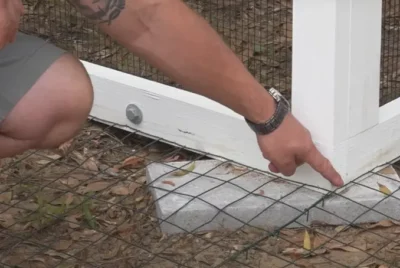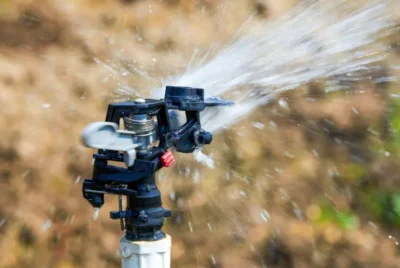How to Retrofit Your Coop with State-of-the-Art Predator Detection Cameras
If you’ve ever experienced the heartbreak of losing a hen to a hungry raccoon or other predator, you know the importance of a secure coop. But did you know that you can give your existing setup a state-of-the-art security boost, without breaking the bank? Get ready to learn how to retrofit your existing coop with state-of-the-art predator detection cameras, keeping your flock safe and giving you peace of mind. Let’s dive in.

1. Evaluating Your Current Coop Setup
Monitoring your chickens closely is imperative for their safety. But how can you be everywhere at once? That’s where a chicken coop camera comes in handy. It boosts the security of your chicken coops by capturing images and videos of any suspicious activity.
However, before proceeding with camera installation, you should assess your existing coop setup. This helps identify any areas that may need improvement to protect your chickens from potential threats, like that crafty raccoon that’s been eyeing your hens.
Identifying Vulnerable Points
Predators are sly and crafty. They can sneak into your coop through small openings in the fencing or uncovered windows. Some can even squeeze through spaces as small as 1 inch in diameter! Pinpointing these vulnerable points is key to deciding on optimal camera installation locations for maximum security.
Be vigilant for signs of a predator’s visit – bird feathers, footprints, signs of a fight, or missing eggs are all clues that your birds’ coop may have been targeted by a hungry raccoon. One might guess that these clues indicate a potential threat to your bird’s safety.
Considering Chicken Wire Integrity
The chicken wire serves as your primary defense against predators, hence its integrity must be checked regularly. Look for broken wires, loose or bent posts, and areas showing wear or tear. If you spot any of these, make sure to reinforce or replace as necessary. Remember, some predators can break through weakened chicken wire defenses.
Coop cameras, also known as security camera systems, can help monitor these weak spots by capturing videos of any unusual activity.
2. Selecting the Right Predator Detection Cameras

Having assessed your coop setup, the next step is to choose suitable predator detection cameras. While there are plenty of options on the market, not all cameras are created equal. Key features to look for include night vision, motion sensors, and long battery life.
For example, the Browning Trail Cameras Strike Force HD Max with Card Reader offers a super-fast trigger speed and a passive infrared sensor with an 80’ detection range. This means it only records when there’s actual movement to capture, saving battery and ensuring relevant footage.
Predator Detection Camera Features for Optimal Security
To guarantee optimal security, you must consider features such as night vision, weather resistance, and connectivity when selecting a predator detection camera for your chicken coop. Select the infrared LED flash, which can reach 120 feet, helping the camera see clearly at night.
The super fast 0.22-second trigger speed ensures that the camera responds immediately to motion, capturing images of fast-moving predators before they have a chance to harm the coop.
Understanding Motion Sensor Technology
Motion sensor technology is a game-changer for coop security. It activates the camera only when there’s movement, saving battery and ensuring relevant footage. Security cameras use a variety of motion sensors like:
- Passive Infrared (PIR) Sensors
- Microwave Sensors
- Ultrasonic Sensors
- Dual Technology Sensors
- Video Motion Detection (VMD)
Each one has its own perks and works best in different situations. Understanding how they work can help you make an informed choice.
Read also: Best Cameras for Chicken Coop: Surveillance for Your Flock
3. Installation Strategies for Maximum Coverage

With the right cameras chosen, the next step is their installation. Optimal coverage requires strategic camera placement and correct mounting techniques. Here are some tips for installing the cameras:
- Mount the cameras at the corners of the coop to cover the widest area.
- Install cameras at the entrance and exit points of the coop to capture any predator activity.
- Place predator detection cameras near areas where predators are likely to approach, such as near bushes or trees. Remember, the goal is to cover as much ground as possible.
Strategic Camera Placement
To get the best coverage in a chicken coop, you should put the surveillance cameras up high, like around 8 to 10 feet off the ground. Make sure to position them at different angles to cover the whole perimeter and maximize visibility.
It’s also a good idea to have them covering the whole inside of the coop to keep an eye on the chickens’ behavior.
Mounting and Securing Cameras
Mounting the predator detection cameras properly is just as important as choosing the right ones. Here are some tips for mounting your cameras:
- Use a strong mounting bracket
- Place the camera higher up to make it harder to tamper with
- For the best viewing angles, mount the cameras at a height of around 2.5 meters (8 feet)
This height is perfect for capturing the surroundings and keeping an eye on predator activity.
Read also: Step-by-Step on Setting Up Your Chicken Coop Camera
4. Integrating Cameras into Your Existing System
After the camera installation, it’s essential to confirm its seamless operation with your existing system. This includes checking for compatibility, setting up connectivity, and configuring alerts and notifications.
Connectivity and Compatibility
Before integrating new cameras into your existing system, ensure they’re compatible with your current setup. Check the specifications of your current system, such as the type of cameras it uses and how they connect. Make sure the new camera’s specifications match.
If you’re unsure, reach out to the manufacturer’s customer support.
Setting Up Alerts and Notifications
You need to set up real-time alerts and notifications to stay informed about any potential threats to your coop. You can set up various alerts like:
- Push notifications
- Email alerts
- Siren alerts
- Trip wire alerts
- Familiar face recognition alerts
- Live video alerts
This ensures you’re always in the know when it comes to your coop’s security.
5. Power Solutions for Remote Predator Detection Cameras

Let’s discuss power next. Coop cameras come with a variety of power options such as wireless setups with AA or rechargeable batteries, solar-powered systems, and cameras that require wiring to a power source or need to be plugged in. You need to select the most suitable option for your specific setup.
Solar-Powered Predator Detection Camera Options
Solar-powered cameras are a great choice for eco-friendly coop security. They offer the following benefits:
- They’re easy to install
- They can save you money in the long run
- They work at night using the energy stored in batteries during the day, so there’s no need to worry about them going dark when you need them the most.
Battery Life and Maintenance
If you choose battery-powered cameras, understanding their battery life and maintenance requirements is essential. Factors such as the type of camera and its features can affect battery life. Regular maintenance is necessary to ensure optimal operation.
Remember, a well-maintained camera is a reliable device for capturing the perfect image.
6. Enhancing Nighttime Protection
Since most predators are nocturnal, your coop is most exposed during nighttime. Therefore, boosting nighttime protection is vital to ensure the safety of your flock.
This can be achieved through dusk-to-dawn settings on your cameras and supplementary lighting.
Utilizing Dusk-to-Dawn Settings
Dusk-to-dawn settings ensure your cameras are active during the most vulnerable hours. They let the cameras switch to night vision mode during dusk and dawn.
This ensures your coop is well-monitored when predators are most active.
Adding Supplementary Lighting
Adding additional lighting to your coop area can deter predators and improve camera visibility. Non-heat options like LED or CFL lights are ideal. They not only deter predators but also provide a suitable environment for your chickens.
7. Maintaining Your Camera System
Correct maintenance of your camera system is essential for its effective functioning. This includes routine inspection, cleaning, and software updates.
Routine Inspection and Cleaning
Consistent inspection and cleaning are necessary to maintain the proper functioning of your cameras. This includes checking their positioning, alignment, and lens cleanliness. Regular maintenance not only prolongs the life of your cameras but also ensures they provide clear and accurate footage.
Software Updates and Troubleshooting
Ensuring your camera system is updated is key to its optimal performance. Regular software updates help fix bugs, improve performance, and enhance security.
It’s also important to be able to troubleshoot any issues that may arise.
Frequently Asked Questions
How do I make my chicken coop predator proof?
To make your chicken coop predator proof, use hardware cloth instead of chicken wire, secure the floors and windows, protect it from above, and install locks for doors and windows at night.
Can I put a camera in my chicken coop?
Having a camera in your chicken coop is a great way to keep your chickens safe and secure. It can give you peace of mind when you’re not able to monitor them yourself.
What predators dig under chicken coops?
Foxes, coyotes, rats, snakes, skunks, weasels, mice, mink, and opossums are known to dig under chicken coops to access them. To prevent this behavior, you can surround the chicken’s run with a 2 foot wide apron of hardware cloth.
How does motion sensor technology make predator detection cameras better?
Motion sensor technology in predator detection cameras ensures that the camera is only activated when there’s movement, saving battery and capturing relevant footage for better accuracy.
How can I make the battery of security cameras in chicken coops last longer?
To make the battery of security cameras in chicken coops last longer, only turn on the camera when needed, choose models with long battery life, use energy-saving features, and keep the camera in a warmer location.
Use Predator Detection Cameras Now
We’ve explored how to evaluate your current coop setup, select the right predator detection cameras, implement installation strategies for maximum coverage, integrate the cameras into an existing system, choose the best power solutions, enhance nighttime protection, and maintain your camera system.
With these tips, we hope you feel confident in upgrading your coop’s security and keeping your chickens safe. Remember, a secure coop is a happy coop!





